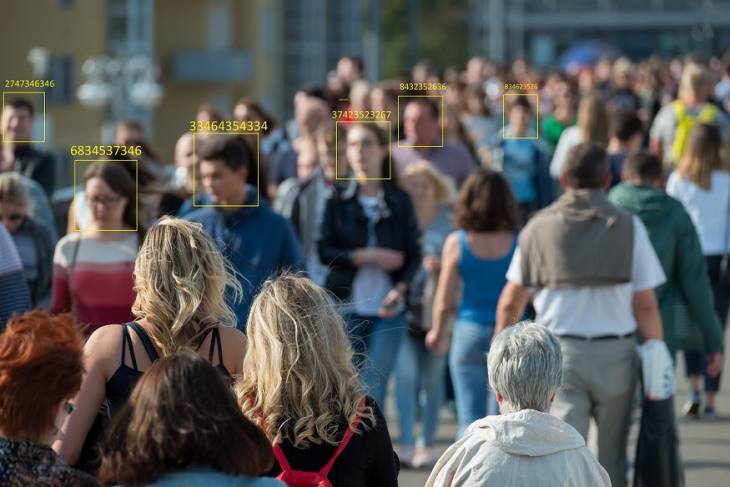Facial Recognition Tech Is Stoking Fears of Big Brother Surveillance in China

Imagine if surveillance cameras were able to capture your indiscretions, and broadcast them in public areas to shame you. Or, if your local bank used facial recognition software during your visits to determine if you were lying.
While these scenarios may seem like the workings of a watchful dystopian society in a novel you read in high school, a quick trip to China reveals it’s actually happening. Facial recognition software in China is making fears of Big Brother’s watchful eye a stark reality.
The Asian nation has embraced facial recognition technology and artificial intelligence with open arms, incorporating the tech into industries far beyond that of its overseas neighbors, like the United States.
Facial recognition technology is infiltrating China’s public's daily lives in urban crosswalks, banks, and even digital marketing solutions. From billion dollar facial recognition startups to nationwide organizations using the tech, it seems as though Big Brother surveillance really does reign in China.
Facial Recognition Tech Used for Surveillance in China
The prospect of using facial recognition technology to enable widespread public surveillance seems unnerving to Americans who have had personal freedom and privacy on the brain since 1776. But, China claims it is using A.I. and facial recognition tech to protect its citizens.
Through the relationship formed between A.I. and facial recognition companies like SenseTime and Megvii and the nation’s government, China has seen reductions in fraud, increases in arrests, and implementation of the surveillance system in catching fugitives or locating missing persons.
However, the lack of oversight in this potentially invasive and sophisticated technology gives the U.S., with its obsession with privacy, the heebie-jeebies. That isn’t to say our nation doesn’t employ a little facial recognition and A.I. use of its own; it’s just that ours are simply geared toward digital marketing solutions, and have stringent restrictions (currently) in place.
U.S Uses Facial Recognition Tech for Digital Marketing
Rather than use facial recognition tech in our government to keep an eye on our citizens, we slipped it onto our smartphones.
Remember Snapchat, the delightful app that scanned your face so you could be a dog or wear a flower crown? And then remember when that app was suddenly so laden with outside advertisements (such as Taco Bell and Gatorade) and brand-sponsored filters that you could barely use it?
American citizens are becoming so inundated with advertisements that we hardly notice these digital marketing solutions. As a result, companies are looking to push artificial intelligence and facial recognition tech even further into their marketing ploys.
Push for Facial Recognition Tech in Marketing
Consider the reality of an America where your phone could scan your face while you were browsing online, determine your mood, and then offer you products to suit that mood. Would you find it convenient or disturbing?
What about a billboard that changed appearances to match your gender, age, or ethnicity?
While some people may be content to accept these kinds of changes, maybe even be delighted by such a personal experience, others are still deeply concerned at just where it all ends.
In China, the citizenry have less of a chance to rebel against government surveillance and security systems that utilize facial recognition software. However, Jeffrey Ding, a researcher focused on Chinese A.I. at Oxford University, states that countries in the West are much more likely to push back and fight against the use of public surveillance and security systems that utilize facial recognition software.
Big Brother watching has no real impact on our lives here in the West, at least for now.




















![7 Must-Haves for Hiking, Fishing, and Other Outdoor Activities [node:title]](/sites/default/files/styles/video_thumbnail_bottom/public/person%20outdoors%20activities%20musthaves%20standing%20on%20gray%20rock.jpeg?itok=oQDqT42h)